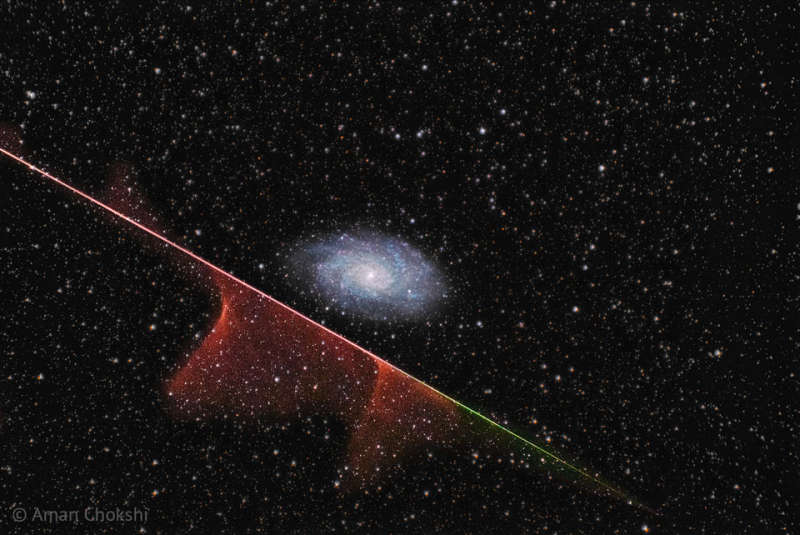Credit & Copyright: Aman Chokshi
Explanation:
The galaxy was never in danger.
For one thing, the
Triangulum galaxy (M33), pictured,
is much bigger than the
tiny grain of rock
at the head of the meteor.
For another, the galaxy is much farther away -- in this instance 3 million
light years as opposed to only about 0.0003 light seconds.
Even so, the
meteor's path
took it angularly below the galaxy.
Also the wind high in
Earth's atmosphere blew the
meteor's glowing evaporative molecule train away from the galaxy, in angular projection.
Still, the astrophotographer was quite lucky to capture
both a meteor and a galaxy in a single exposure -- which
was subsequently added to two other images of
M33 to bring up the
spiral galaxy's colors.
At the end,
the meteor was gone in a second, but
the galaxy will last billions of years.
Your Sky Surprise:
What picture did APOD feature on your birthday? (post 1995)
1999 2000 2001 2002 2003 2004 2005 2006 2007 2008 2009 2010 2011 2012 2013 2014 2015 2016 2017 2018 2019 2020 2021 2022 2023 2024 2025 |
Январь Февраль Март Апрель Май Июнь Июль Август Сентябрь Октябрь Ноябрь Декабрь |
NASA Web Site Statements, Warnings, and Disclaimers
NASA Official: Jay Norris. Specific rights apply.
A service of: LHEA at NASA / GSFC
& Michigan Tech. U.
|
Публикации с ключевыми словами:
Метеор
Публикации со словами: Метеор | |
См. также:
Все публикации на ту же тему >> | |
Мнения читателей [10]
